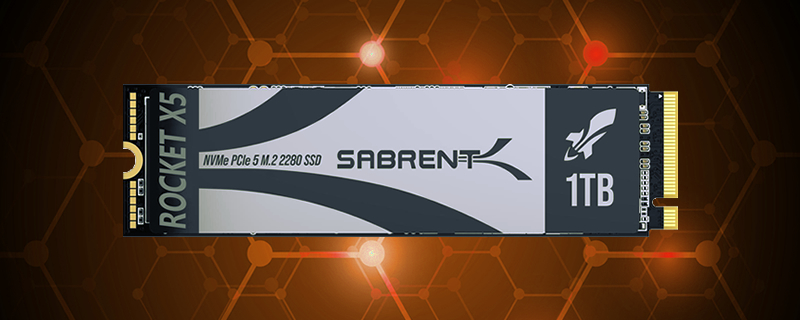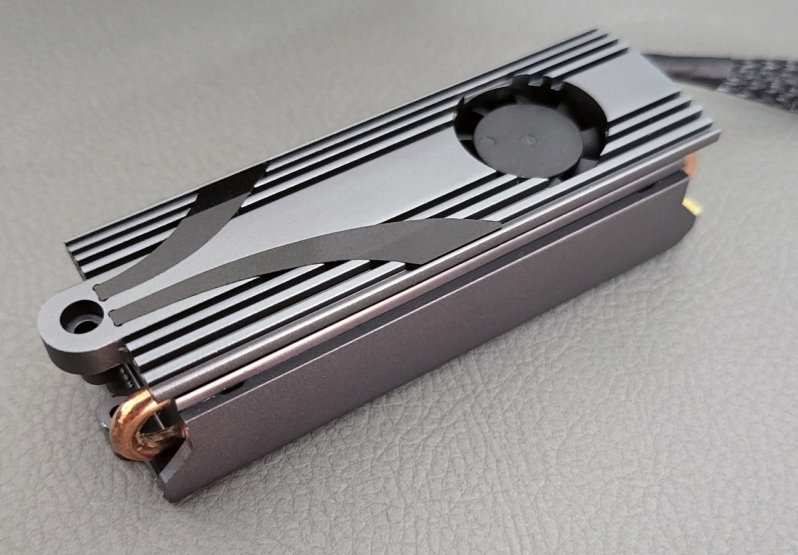Sabrent updates us on their boundary-pushing Rocket X5 PCIe 5.0 SSD

Sabrent’s working closely with Phison to ensure that their PCIe 5.0 Rocket series SSDs push the limits of storage performance
Sabrent has today given us an update on their SSD portfolio, including their plans to launch a PCIe 5.0 SSD that pushed the boundaries of what today’s hardware is capable of.
While most PCIe 4.0 SSDs target sequential read speeds of 10 GB/s or 12 GB/s, Sabrent has already pushed their drives to 14,000 MB/s and beyond. Sabrent does not want to rush to market with a PCIe 5.0 SSD, they aim to release a PCIe 5.0 SSD that fully takes advantage of the PCIe 5.0 interface and pushes the limits of SSD performance.
With their prototype Rocket X5 SSD, Sabrent have already surpassed the PCIe 5.0 SSDs that are available to buy today, and Sabrent are working with Phison to optimise their SSD design and firmware further to push the performance of their PCIe 5.0 drives as high as possible.
In the last few months, there has been a wealth of new systems that all have Gen 5 SSD capabilities. A few companies have even released Gen 5 SSDs rating in the 10,000 MB/s range, and even some are starting to show up in the 12,000 MB/s speed range.
At Sabrent, we have been working very hard to bring this new product to market while working extremely closely with Phison to develop our new line of Gen 5 SSDs to push the boundaries to 14,000 MB/s and beyond.
There have been many challenges to overcome with these new products to meet our strict requirements for new drives to enter our lineup of high-quality products. We have been working to make the best Gen 5 SSD possible to improve system performance and user experience.
(CrystalDiskMark score for Sabrent’s pre-release Rocket X5 PCIe 5.0 SSD)
In CrystalDiskMark, Sabrent are already pushing sequential read speeds as high as 14,179 MB/s and sequential read speeds of 12,280 MB/s, values that are already far ahead of currently available PCIe 5.0 SSDs.
Currently, Sabrent has not commented on what has allowed them to achieve these performance feats, though it is likely a combination of firmware optimisations, and fast NAND. At this time, we do not know what NAND Sabrent are using with their new Rocket X5 PCIe SSD prototypes.
With our CrystalDiskMark testing runs, we have broken records that top the charts. Over 14,000 MB/s in both Seq Read and over 12,000 MB/s Seq Writes numbers to drool over.
The new Rocket X5 is still in the tunning process, and we expect performance to improve even better. This still needs to be a finished product, but we are moving forward with the tech we have at hand now. To name a few items, many things can change, including the name and label and the heat sink. As we work with Phison very closely, new tech is on the way, and Phison assists us in pushing what we have now to achieve groundbreaking results.
(Sabrent’s prototype PCIe 5.0 heatsinks)
A heatsink that promises to be free of “high-pitched whine”
Today’s PCIe 5.0 SSDs are designed to push the limits of SSD performance, and that requires a powerful controller, fast NAND, and fast DRAM. All of these components requires power and all of these components produce heat, so it is unsurprising that PCIe 5.0 SSDs are hotter running than their PCIe 4.0 counterparts.
Sabrent has stated that all PCIe 5.0 SSDs should be used with a heatsink, commenting that motherboard heatsinks will be sufficient on PCIe 5.0 motherboards, and that those who want better cooling can invest in dedicated SSD heatsinks. Above, you can see Sabrent’s prototype SSD heatsink, a heatsink that they claim is lacks the “high pitched whine” that some other PCIe 5.0 SSD heatsinks process.
We have also been testing different heat sinks to cool these new drives. These Gen 5 SSDs should not be run without a heat sink as they will get hot very fast. Most motherboards built for Gen 5 SSDs have heat sinks that should work just fine, but for those who want even better cooling we will show what we have been working on, which is performing very well. It does not make a high-pitched whine and is well-suited for cooling these new SSDs. This is still a prototype but, in our testing, it is working very well.
Sabrent’s planned Rocket X5 SSD is shaping up to be an impressive SSD, and we look forward to the day that we can run it through its paces. We respect the fact that Sabrent has not rushed a PCIe 5.0 SSD to market to capitalise on early sales, and look forward to seeing how the market reacts to Sabrent’s boundary-pushing PCIe 5.0 SSD when it arrives. Do you think it will take long for competitors to catch up?
You can join the discussion on Sabrent’s PCIe 5.0 SSD plans on the OC3D Forums.




